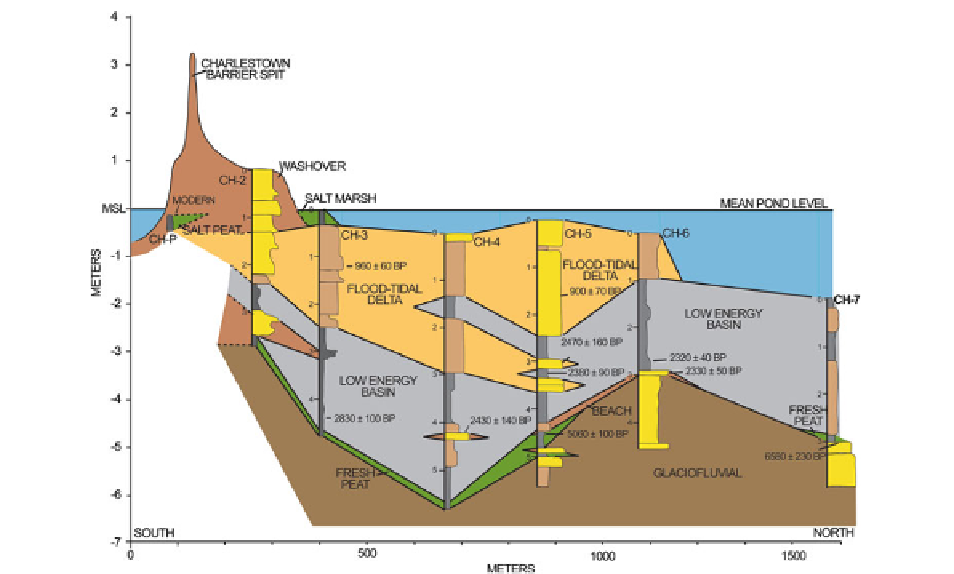Geology Reference
In-Depth Information
Fig. 12.19
Facies architecture of the Charlestown fl ood-tidal delta system on the Rhode Island coast (From Boothroyd et al.
1985
)
Brownridge, and Moslow (
1991
) identify a Lower
Cretaceous tidally-infl uenced estuarine and marine
facies at Drayton Valley of central Alberta. Cheel and
Leckie (
1990
) describe a tidal-inlet complex in the
Upper Cretaceous Milk River Formation of southern
Alberta, Canada. A fl ood-tidal delta complex, with
fl ood- and ebb-dominated facies is clearly identifi ed
in the upper Virgelle Member, suggesting optimal
preservation during transgression. The upper shale
units with ebb-oriented rippled sandstone interbeds
are interpreted as low-energy facies (Cheel and
Leckie
1990
) and are analogous to post-closure mud-
plugs in historical inlet sequences described in the
previous section. In the contemporary Upper
Cretaceous Cliff House sandstone of San Juan Basin,
New Mexico, Donselaar (
1989
) identifi es stacked
“transgressive” barrier complexes with distinct land-
ward translation (“step-up”) phases. In his discussion
of shoreline displacement and preservation potential,
a scenario of a “deeply scouring and laterally-migrating
tidal inlet” is used to demonstrate the differences in
the observed sandstone volume (Donselaar
1989
,
Fig.
12.14b
). Such tidal scour (tidal ravinement) and
a “step-up” of erosional shoreface ravinement surface
are probably responsible for preservation of many
tidal-inlet sequences.
As an early Cenozoic example of preserved tidal
inlet facies, Ricketts (
1991
) presents a model of
broad, shallow bays connected to the ocean through
tidal inlets in the Lower Paleocene of the Canadian
Arctic Islands. He used both facies architecture and
morphological elements to distinguish these barred
estuaries from deep, narrow valleys that had small
inlet-spit systems or lacked tidal inlets. An increasing
number of studies utilize sequence-stratigraphic prin-
ciples, combined with sedimentological and ichno-
logical studies, for detailed facies interpretations. In
their study of sedimentary sequences in the paleo-
Tokyo Bay, Okazaki and Masuda (
1995
) recon-
structed a Pleistocene barrier island, tidal inlet, and
tidal delta complex.
Recognition of ancient inlet and tidal delta facies is
not only an important element of paleo-environmental
reconstruction, but is a key target for petroleum explo-
ration. Substantial amounts of petroleum reserves
residing in channel-fill successions and associ-
ated tidal delta sequences are well known (Cheel
and Leckie
1990
. Brownridge and Moslow
1991
)

